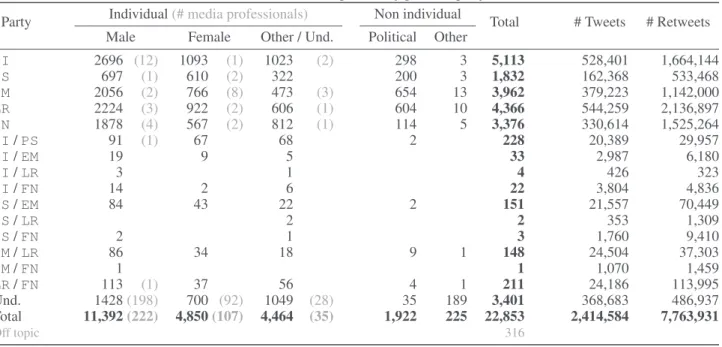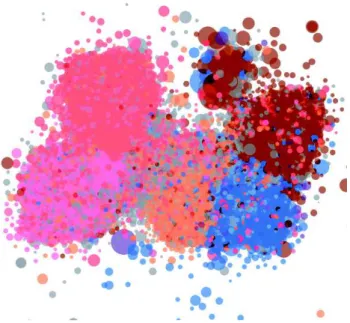#Élysée2017fr: The 2017 French Presidential Campaign on Twitter
Texte intégral
Figure




Documents relatifs
Current 100-year mean regimes (grey), low-flow regimes (blue lower line), and high-flow regimes (blue upper line) estimated by using the FDC method on the control discharge
The analysis of digital strategies of Viktor Ianukovych according to our semiotic model show the path made by the digital strategy from the pole of utopia (expressed by the picture
The GLORIA measurements show how different the two parts of the flight have been regarding the composition of the measured air masses: in the first part of the flight, high VMRs of
cal positions from Twitter data, as his Bayesian Spatial Following model recovers ideal point estimates that effectively reconstitute the contemporary French party space.. Similarly,
Column 4 Approval voting, grade of Emmanuel Macron Column 5 Approval voting, grade of Benoˆıt Hamon Column 6 Approval voting, grade of Nathalie Arthaud Column 7 Approval voting,
Overestimation bias: Estimation of the election result of the preferred candidate (on a scale from 0 to 100%) is compared to his/her election result (collected after the
The tweets from both the presidential candidates Twitter screen where extracted and classified into four areas such as economy, foreign policy, social issues and leadership with
Fig. Results of the feeding experiments in which an adult H. axyridis was the predator and C. carnea the prey. Circles are PCR data; n = 15 individual predators used for each



